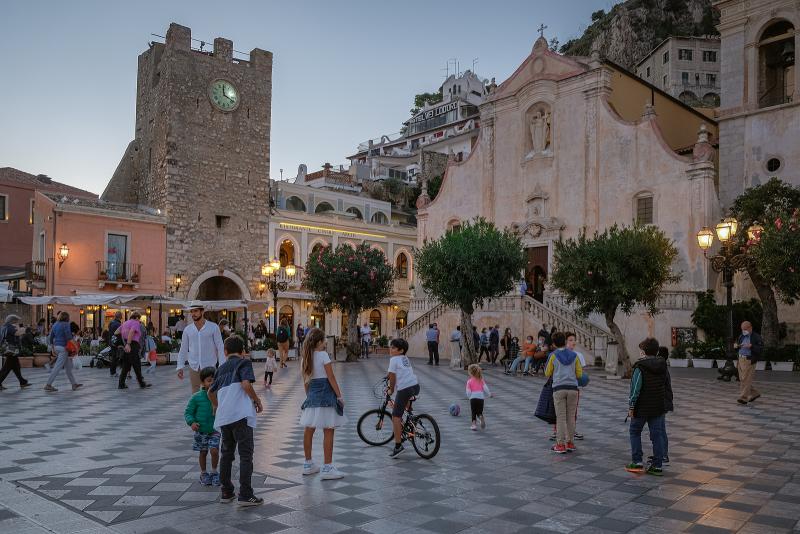Italy will ease coronavirus restrictions in lower-risk ‘yellow zones’ beginning April 26, announced Italy’s prime minister Mario Draghi during a press conference last Friday.
Restrictions on business and movement have been in place since last fall’s second wave. Italy has the seventh highest death toll in the world (the second in Europe after the U.K.) and still reports hundreds of fatalities every day.
“The government is taking a reasonable risk based on scientific evidence that tells us that the transmission risk in outdoor places is much lower,” said Draghi, who is facing pressure from political parties and regional governors for the country’s reopening.
Here’s a possible timetable for reopening that has been presented and is subject to change. It only applies to yellow zones, where the epidemiological risk is considered lower.
[Regions in Italy are divided in a color-coded system ranging from white (very low risk) yellow (low risk), orange (high risk) and red (very high risk) depending on transmission rates, availability of hospital and ICU beds, and other parameters. Different restrictive measures apply to each zone.]
On April 26, restaurants and bars can reopen for lunch and dinner, but only with outdoor seating. In orange and red zones, restaurants and bars can only stay open for take-out and delivery.
From June 1, in lower risk zones, restaurants may open for indoor seating at lunchtime.
All museums reopen in yellow zone regions from April 26, as well as theaters and cinemas; if indoors, their capacity will be limited, masks and distancing will still be required.
A national curfew remains in place between 10 pm and 5 am, although some regional governors and political parties are pushing for it to be moved to at least 11 pm.
All schools and universities will resume in-person teaching in yellow and orange zones.
Movement between regions, which has been restricted since December 20 of last year, can resume between yellow zones; to move between regions of different colors, the government is currently considering a pass that would certify whether you have been vaccinated, have had Covid-19 or have a taken a negative PCR test.
Contact sports among friends such as soccer and basketball will also be allowed from April 26 in yellow zones. Stadiums may reopen form May 1 at 25% capacity or with a maximum of 1,000 spectators. Indoors stadiums can also open, with a maximum of 500 people.
Swimming pools and beach clubs may reopen from May 15, but only outdoors and with limits on the number of people allowed in at the same time.
Gyms and indoor fitness facilities may re-open from June 1, with new safety guidelines, which require face masks in communal areas, limit the number of people allowed to exercise at the same time, and ask users to book their session in advance.
Large trade fairs, such as Vinitaly in Verona, Salone del Mobile in Milan, Cosmoprof in Bologna, which have all been postponed, can resume from July 1. On that date, theme parks and spas are also allowed to reopen.
As for international travel to Italy, current restrictions are not expected to be eased until June 2, when non-essential travel may possibly resume. Non-essential travel (i.e., tourism) to Italy from most non-EU countries including the United States is prohibited. Essential travel is allowed and includes students, businesspersons, EU residents, and relatives of Italian citizens. The Government of Italy periodically updates these restrictions based upon changing conditions, check the Italian Ministry of Foreign Affairs’ website for the latest updates.
All of Italy’s 20 regions are currently classified as either orange or red zones. Eleven regions plus the Autonomous Provinces of Trento and Bolzano are hoping to move to the 'yellow zone' on April 26. The new colors classification will be announced this Friday.













